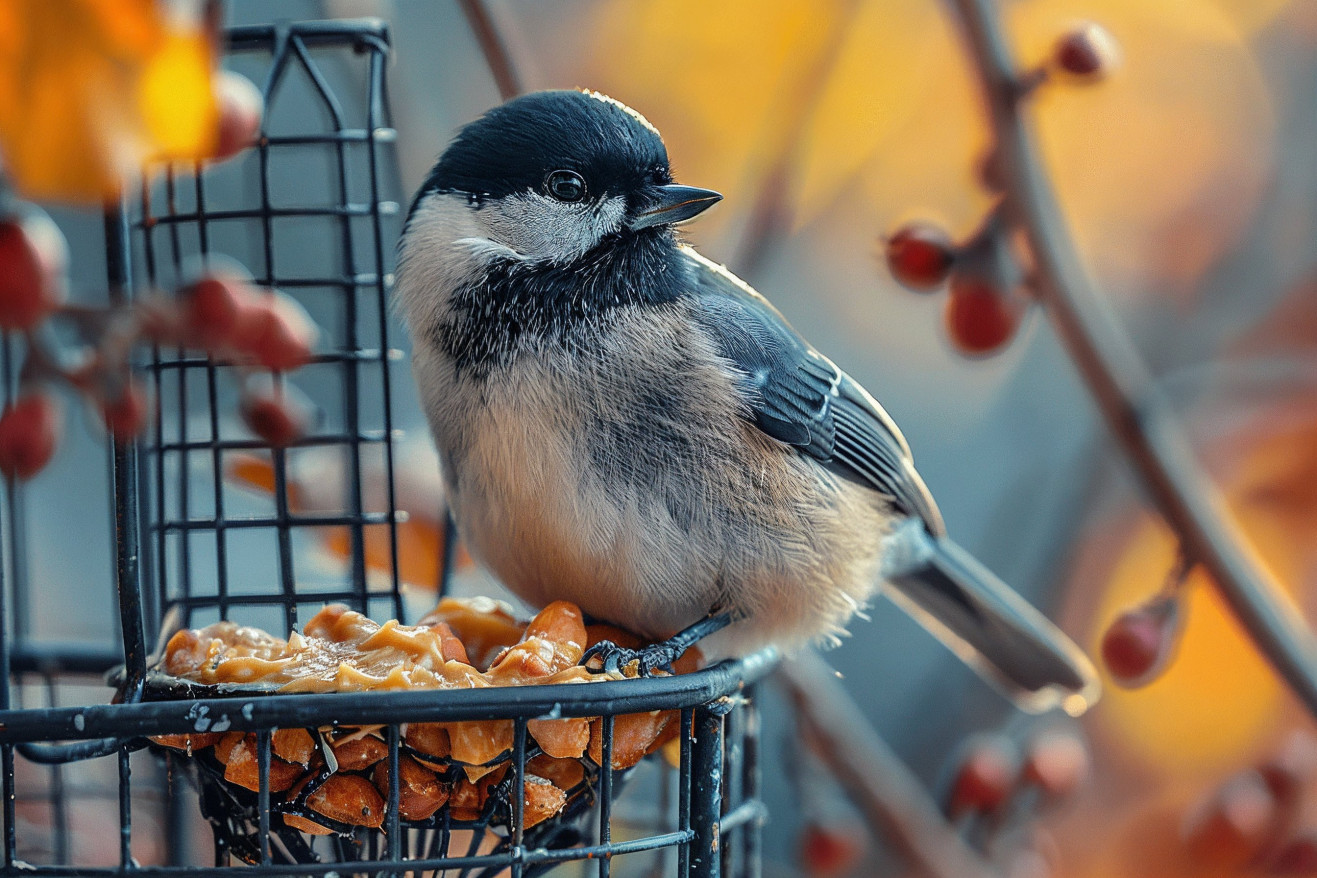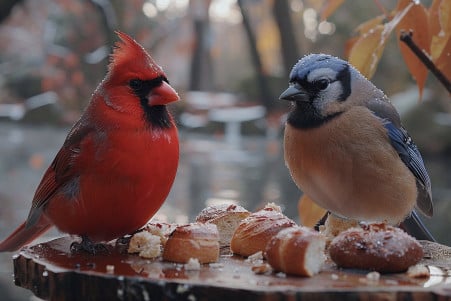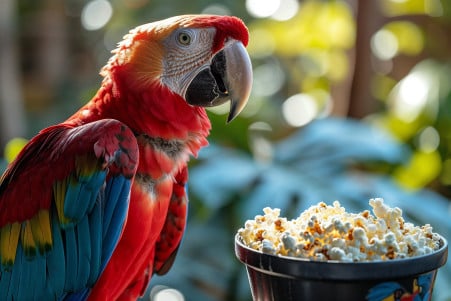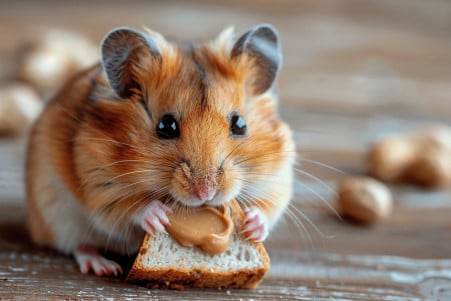Can Birds Have Peanut Butter? The Science
25 April 2024 • Updated 24 April 2024

While it may seem like a delicious snack for our avian friends, is it OK to give peanut butter to birds? Peanut butter can be a good source of nutrition for birds if it's given to them in moderation, but there are some caveats. The high protein and fat content can be a good source of energy for birds, but the sticky nature of peanut butter can be a choking hazard, and birds should be limited in their intake of salt and sugar.
To get a complete picture of whether or not peanut butter is a good option for birds, we'll look at studies from avian nutritionists, veterinarians, and wildlife rehabilitation professionals. This will help us understand the potential advantages and disadvantages of feeding birds peanut butter and other human foods. By the end, you'll know whether or not it's safe to occasionally give your birds this nutty spread as a special treat.
Can birds eat peanut butter?
Birds That Like Peanut Butter
There are many birds that like peanut butter as a food source. According to BirdTipper, woodpeckers, nuthatches, and blue jays are some of the birds that are especially attracted to peanut butter. These birds have strong beaks that can break through the sticky peanut butter to get to the good stuff inside.
Birds and Blooms explains that birds like woodpeckers will eat peanut butter directly off of tree bark, while others like it in peanut butter feeders. Some birds, like nuthatches, can even eat peanut butter from the bottom of a branch or feeder by hanging upside down.
The different birds are attracted to peanut butter because of its high protein and fat content, which can help them meet their energy needs. As an Instructables guide explains, you can make peanut butter even more attractive and nutritious for birds by adding seeds to it. To attract birds that like peanut butter, you can spread it on tree trunks, pinecones, or invest in a log feeder that has a reservoir for peanut butter.
Safe Feeding Practices and Portion Control
Although peanut butter can be a healthy snack for birds, it’s important to make sure it’s given in a way that’s safe and healthy for the birds. According to The Humane Society of the United States, the general rule for feeding any wild animal is to avoid offering food that might cause harm, such as during a local outbreak of avian disease that could spread through feeders.
Peanut butter is high in calories and fat, which can lead to obesity and nutritional deficiencies if birds eat too much. As a result, Soar with Birds suggests that it’s important to offer peanut butter in moderation as a supplement to a diet that includes seeds, fruits, and insects. Keeping an eye on how much the birds are eating and how often they visit the feeders can help ensure they don’t overdo it.
To minimize the risks, Soar with Birds recommends using natural, unsalted peanut butter that doesn’t contain any additives like salt or xylitol, which can be toxic to birds. Properly designed feeders and regular cleaning are also important for preventing accidents and contamination. By following these safe feeding practices and portion control guidelines, you can make sure that peanut butter is a safe and healthy occasional treat for the birds that visit your yard.
Peanut Butter Bird Feeders You Can Make Yourself
One way to make a peanut butter bird feeder is to create a DIY version at home. Not only are these feeders fun to make, but they can also help you attract a wide range of birds to your yard. According to Raising Little Superheroes, you can make a simple feeder using a few basic materials, including a piece of bread, peanut butter, and birdseed. After toasting the bread, use a cookie cutter to cut it into a fun shape, then cover it in peanut butter and roll it in birdseed. Finally, poke a hole in the top, string it with a piece of twine, and hang it from a tree or shrub.
If you want to make a more interesting feeder, STEAM Powered Family recommends using a recycled toilet paper roll as the base. After spreading a thick layer of natural peanut butter on the roll, roll it in birdseed and tie a piece of string through the center to create a horizontal feeder. These projects are easy and inexpensive, and they not only give the birds in your area a healthy snack, but they also help the environment by reusing items that would otherwise go to waste.
In addition to these simple feeders, the Empress of Dirt even offers a recipe for making your own peanut butter suet, which is a high-energy winter food that woodpeckers, nuthatches, and other birds love. By adding these creative feeders to your yard, you can cater to the specific feeding needs of different bird species while also supporting the environment.
Varying Bird Feeder Foods: More Than Just Peanut Butter
While peanut butter can be a helpful supplement to a bird’s diet, it’s important to offer a variety of foods. According to Birds and Blooms, many of the most popular backyard birds will eat a variety of kitchen scraps, including fresh and dried fruits, vegetables, eggs, and even unsalted nuts.
For example, BeChewy explains that songbirds like catbirds, chickadees, and robins love fresh fruits like apples, berries, and grapes. Offering a variety of these nutrient-rich foods can help ensure that the birds in your area get what they need. As mentioned by Really Wild Bird Food, cooked eggs and unsalted nuts are also great sources of protein and calcium.
To help ensure that birds get the most out of these different foods, Play of the Wild suggests making your own suet cakes or fat balls that include a variety of ingredients like oats, bread crumbs, and dried fruit. These can be placed in feeders that are designed to attract a variety of birds and that encourage natural foraging behaviors. By offering a variety of foods, you can help make sure that the birds in your backyard get the balanced diet they need to stay healthy and happy.
Conclusion: How to Feed Birds Peanut Butter Safely and Sustainably
Peanut butter is safe for birds because they don't eat it the same way an adult human would. Instead of taking a big bite, they peck off small pieces that are easy for them to swallow. According to the Bird Watcher's General Store, peanut butter is a popular food for feeding birds and most feeder birds will eat it. And since birds have a poor sense of taste, you can use any kind of peanut butter.
The Audubon suggests mixing peanut butter and corn meal as a summer alternative to suet. This year-round mix will attract woodpeckers, chickadees, titmice, and occasionally warblers.
That said, it's important to use natural, unsalted peanut butter without additives, because according to Soar with Birds, salt and xylitol are toxic to birds. And because it's calorie-dense and high in fat, too much peanut butter can lead to obesity and nutritional imbalances. To avoid these problems, feed peanut butter in moderation as a supplement to a balanced diet, and keep an eye on bird activity and the amount of food they're eating.
By experimenting with homemade feeders and promoting responsible feeding, you can create a sustainable backyard habitat that supports and attracts a range of local bird species.


